The Unity-Consciousness Paradigm, Part 1: Mind, Body, Soul
Introduction
This essay will be the first in a hopefully ongoing series on philosophy, science, and metaphysics. Basically, I will attempt to describe a unified "Theory of Everything," in portions. These essays are not about things that I understand, but about things that I am trying to understand, and I'm hoping that in writing this I'll be able to understand them better.
There are many sources of information that have supplied the theories I'm going to write about. I can't be bothered to keep track of who said what (at least not all the time), and to be honest, I don't think it really matters. I'm going for unity and consistency, and to achieve that I might have to make up my own theories just to fill in the gaps where things might not blend together so well. Or I might just be repeating something I heard or read from a source that I no longer remember.
The first central concept of this theory is Oneness, or Monism. All is one. The uni-verse is a continuum, everything is connected, and there is no separateness.
The second central concept is that the nature of this Oneness is consciousness. The Oneness is aware, it is experiencing, it is subjective, it is capable of thought.
The first concept is not that difficult to accept in my opinion, although it is not accepted by everybody. The second concept, that the Oneness is conscious, I think is one far fewer people accept, least of all those of the atheistic scientific materialist persuasion, which I sometimes refer to as the dominant (scientific) paradigm.
However, many people have and many people do accept these two concepts. In fact, these concepts are as old as recorded history, and are a central part of what Aldous Huxley called, "The Perennial Philosophy."
"the metaphysic that recognizes a divine Reality substantial to the world of things and lives and minds; the psychology that finds in the soul something similar to, or even identical with, divine Reality; the ethic that places man's final end in the knowledge of the immanent and transcendent Ground of all being; the thing is immemorial and universal. Rudiments of the perennial philosophy may be found among the traditional lore of primitive peoples in every region of the world, and in its fully developed forms it has a place in every one of the higher religions" (The Perennial Philosophy, p. vii).
In these essays I will occasionally attempt to show that modern scientific evidence, especially in quantum theory, verifies what the "mystics" of the world have been saying for thousands and thousands of years.
The perennial philosophy combined with modern science forms the basis of the paradigm I will try to outline here, which I'll call the Unity-Consciousness Paradigm.(U.C.P. You see pee?... whatever...)
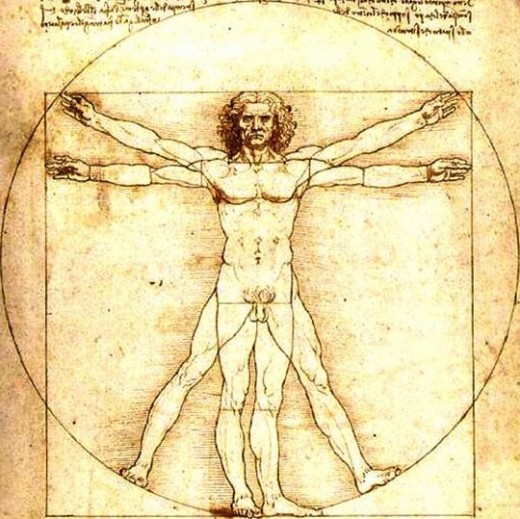
Body
What does it mean to say that all is one? Basically, we are saying that all of existence, the universe we live in and all the others that may exist, are part of a single continuum, and there really is no such thing as separateness. This idea has been called the Law of One (law, as in law of nature). Separation is an illusion, or thought habit, or metaphor we use to describe the world. It is helpful to talk about things separately, but in reality, there is only one thing. The uni-verse. We are all one body, one mind, and one spirit.
The illusion of separation is an essential part of the human experience. We perceive, think about, and communicate with each other in terms of dualities and pluralities. Seeing many things instead of just the one thing, gives us many things to do, many things to think about, and and many things to say. We see things in terms of this or that, me and you, us and them, near and far, here and there, then and now, and so on. This is all an illusion, but its an illusion that makes life interesting and it is to our benefit that we experience the illusion of separateness at least part of the time.
We persistently operate under the illusion that we are our physical body, and that this physical body is what we are referring to with the pronoun "I". We tend to think of it as something separate from the rest of the universe, that our skin marks the place where we end, and the rest of the universe begins.
Of course, our body isn't completely sealed off from the universe. There are openings in this sack of skin, through which things from out there enter, and things from in here exit. In goes food, water, air, and out goes... you get the picture. You are what you eat (and aren't what you excrete). There are also many things passing through our bodies that we are not normally aware of, all sorts of waves and particles and fields that interact with us, x-rays, gamma rays, electromagnetic fields, electrical charges, radiation, sound vibration, and so on.The body is not a closed system, it is an open system, and utterly dependent upon and affected by its environment for its existence.
We forget about this because our environment is not prone to rapid and drastic changes in composition and operation. Were the temperature to drop suddenly to the temperature of Pluto, we would freeze to death. Were it to rise to the temperature of Venus, we would burn. Were earth to have the mass of Jupiter, we would be crushed. If it had the mass of the Moon, we would asphyxiate due to lack of oxygen while the decrease in pressure would expand the nitrogen bubbles in our blood causing our veins to pop! It would be disgusting and horrifically painful! (Just sayin, environmental stability counts for a whole lot)
Your body is made out of your environment, and the conditions inside the sack of skin that is supposed to be you are the way they are only because the conditions outside of that sack of skin are the way they are, and those conditions are pretty narrow and specific when you think about it. It is in fact the narrowness and specificity of these conditions which makes your body seem distinct and separate from your environment. While you're up and running around, breathing air of a reasonable temperature, drinking water, eating plants and animals, you seem distinct and separate, but take away one of these things, and it will be obvious that your body and the environment are one (as your rotting, maggot ridden corpse dissolves into just another grease stain in the dirt). Everything inside the sack of skin is borrowed from outside the sack of skin, and eventually the whole thing gets sent back.
What the environment does affects your body, and what your body does affects your environment. You're as separate from the universe as the leaf is from a tree, a toe-nail from a toe, a grain of sand from the beach, a tree from a forest, water droplet from the ocean. Thus, "we are all one body," as the Christians say.
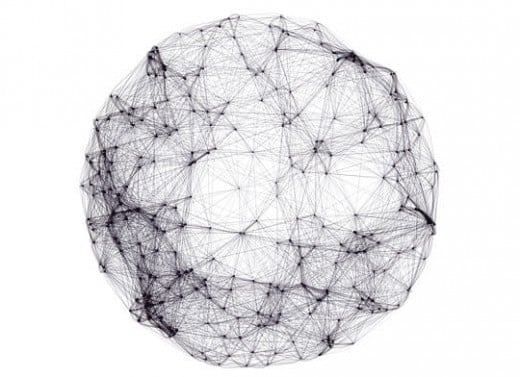
Mind
But wait - I also have a mind with beliefs, ideas, a personality, and a unique point of view, which all seem to be a part of what I call me. For clarity, let's restrict mind to thoughts, beliefs, and ideas, attitudes, essentially the content of the "internal environment," rather than actions or operations such as perceiving, or remembering.
A persistent illusion is that our thoughts, beliefs, ideas, and personality are unique to us and make us who we are. We think they are part of our internal, private world of thought, and separate from what goes our on in our bodies and our environment. Our thoughts are about our bodies and environments. The thoughts themselves, are separate, and unique, and part of you.
In reality the mind is no more isolated from "external" influences than the body is from its environment. Most of our thoughts are related to the interaction of our bodies and environments. I'm hungy, its cold, etc. The more complicated ones, are taken from the people and media (stored and transmitted information) in our environment. Our minds are floating in a sea of information and we are constantly receiving data, processing it, storing it, and using it in one way or another. Our beliefs and attitudes and ideas are formed from this accumulated data (in - form- ation). Every once in a while new data can come in that can alter our beliefs, attitudes, and ideas. If we continually receive data that reinforce our beliefs, it becomes less likely that they will be altered. The vast majority of the data, which is either irrelevant data or of no immediate importance, is disregarded or ignored, as often the case with data that may contradict extant belief structures.
Our minds are programmed or formed by our environment from birth. Among the most powerful of the innumerable influences over the formation of our minds are families, friends, teachers, leaders, experts, bosses, religious institutions, political parties, television, advertising, propaganda, etc. Our beliefs and attitudes are affected by these things, often in ways that we are not aware of for good or bad.
In turn, we act as transmitters of information. We send information out into the world through communication, or through our habits and behavior, through the things we say and do, intentionally and unintentionally. This information then affects the minds of others, and contributes to the overall content of the total information in the environment. Information flows, and our minds are like eddies in this flow. The information enters, spins around, and gets released, sometimes in a different form. There is one flow, one sea of information, one mind. Our ideas, beliefs, thoughts, and attitudes don't come from ourselves, they come from this sea of information, and like the water in our bladders, are ours temporarily. The sea of information is sometimes called the noosphere, as opposed to the biosphere. Literally, noosphere means sphere of thought, however some define it as sphere of human thought, which is not what I am going for here. Information is transmitted from and between everything, everything is part of the noosphere.
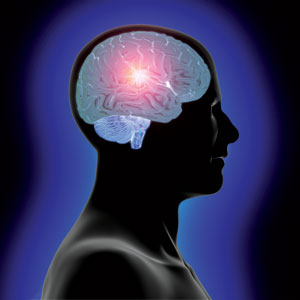
Soul
So if my body is not mine, and my mind is not mine, what's left that is mine? Well, there's consciousness. The soul, if you like. The little light inside your head, that sits up there and watches everything that happens. Its the thing that everything seems to be happening to, including the things that happen inside your mind, body, and environment. Call it your own unique perspective, your individual consciousness, your soul, or whatever you want (I like consciousness, even though I get tired of repeating it over and over again). It's the personal, individual, subjective state of awareness, the most personal thing that you have - if anything is you, and nothing but you, its that.Right?
Well... What is consciousness, anyways? Philosophers and scientists have argued over this for thousands of years. Modern psychology and neuroscience have yet to provide an explanation for what consciousness is and why it exists, where it exists, and how it exists. Its a problem for materialism, in that in a world of strictly physical, material processes in action, there's no reason for it - it does not seem to play a role in the deterministic machinations of the material biological body. Consciousness cannot be measured, photographed, dissected, or weighed. It is not matter, nor does it seem to have any direct affect on matter. It could be said to be an emergent property of matter, specifically a property of a sufficiently complex brain and nervous system. But a sufficiently complex and organized brain should be capable of running an animal the way a sufficiently complex hard drive can run a computer - why do we get the added benefit, or maybe when times are tough, curse, of consciousness, of having to be aware of our pain, to feel our pain? Why can't our bodies just react automatically to external stimuli the way a sufficiently programmed machine would, without all the drama of awareness? Mainstream science has yet to provide an answer, and for the most part, tends to avoid the question.
There is a simple reason that science has had such a difficult time understanding consciousness. Consciousness cannot be empirically observed. It is not a physical thing. It cannot be found by digging around in the mass of grey jelly and maze of neural pathways that is your brain. Our only experience of consciousness is our own subjective experience. We know that we are conscious (don't we?), but we can only assume that everyone else is conscious - not soulless zombies or automatons impersonating human behavior.
Since consciousness is not a physical thing that can be studied objectively, we must consider what it is subjectively. All we have to go by is our own personal experience, and the descriptions of others. The latter is no replacement for the former. The best way to really understand something is to experience it yourself.
Probably the most simple and common method of doing this is through meditation - through intentionally creating a state of thoughtlessness, removing the objects of thought from our perception and ceasing the near constant internal "chatter" of our minds, we are able to experience what it is to be conscious at the purest level, awareness absent thoughts, judgements, beliefs, and concepts.
From this perspective of primal awareness, the awareness of a distinct mind, body, environment (space/time) dissolves. The experience is of being outside of these things, in an unbounded state of non-locality. You are aware, but have no thoughts, no judgements, no beliefs, no physical body. The feeling is one of immense peace and love, and oneness with everything. One is in a state of awareness that is no longer Marshall Hammond or (inset name here), but what has been called the fundamental ground of being, the source of all the forms, experiences, and activities that make up the universe, and from which all things arise. Some refer to this fundamental ground of all being, this source of all things, this place of primal awareness, as God. In the past, some people or characters in books have claimed to be God, and this appears to be exactly what they meant.
When one hovers on the edge of this meditative state, thoughts and sensations ripple across your awareness like waves on the surface of the ocean. In the calm silence there is nothing but the endless ocean of oneness, and then across the surface a splash of perception, a spray of an idea, a wave of a memory or belief, and then a return to the ocean of oneness and no distinctions. In meditation, we switch back and forth between the states of experiencing the waves and of being the ocean.
From the subjective experience of primal consciousness, we get the feeling that all that we experience, the mind, the body and the "external" universe itself, really are like waves on the surface of an ocean of consciousness, that it all arises from and returns to the same source, and that we are that source.
Paradigm...shift!
This is not the standard scientific view. The standard, physical materialist view is that consciousness arises from matter, not the other way around. And this is one of, and perhaps the most important, differences between the Unity-Consciousness paradigm and the dominant physicalist materialist scientific paradigm. The consciousness paradigm holds that consciousness is the primary substance of the universe, and all other phenomena arise or are derived from consciousness, including what we call physical matter.
How the dominant paradigm came to be accepted and perpetuated over the last few hundred years is an interesting topic and of great historical importance, but must be glazed over for the sake of brevity. Its my opinion, and I'm certainly not alone on this, that the dominant paradigm has been pushed on us by our "elites" as a social control mechanism, much the way Christianity and other religions and belief systems were pushed on populations in previous centuries. The modern physical materialist viewpoint is also in large part "blow back" from the horrifying affects of institutionalized religion in Europe and across the world. Unfortunately, the affects of institutionalized secularism seem to be just as horrifying in many cases. Institutional religion gave us crusades, witch burnings, genocide, Secularism gave us carpet bombs, Stalinism, and more genocide. And both paradigms continue to devastate the world today. The never ending "war on terror" is a prime example of what happens when both paradigms are put to work simultaneously.
Of course, my belief that a paradigm has had detrimental affects on humanity is a separate issue from whether or not that paradigm is valid. So, what scientific or logical reasons are there for the validity of the perennial philosophy over the dominant paradigm, specifically the claim that consciousness is the primary substance of the universe?
A paradigm should fail or succeed based on that paradigm's explanatory ability. Anomalies are events that are unexplainable within a certain paradigm but may be explained in another paradigm. For instance, the apparent retrograde motion of the planets was an anomaly for the earth-centered astronomical paradigm until it was replaced by the heliocentric paradigm and the apparent retrograde motion was explained in terms of the way the planets orbit around the sun.
Perhaps the most crucial anomaly of the physical materialist paradigm is the existence of consciousness itself. As discussed earlier, main-stream science has no explanation for why consciousness exists, or how it arises out of physical matter. Yet, we know consciousness exists. In fact, it is really the only thing that we know with absolute certainty - that we are conscious, experiencing, being. As Descartes said, " I think, therefore I am."
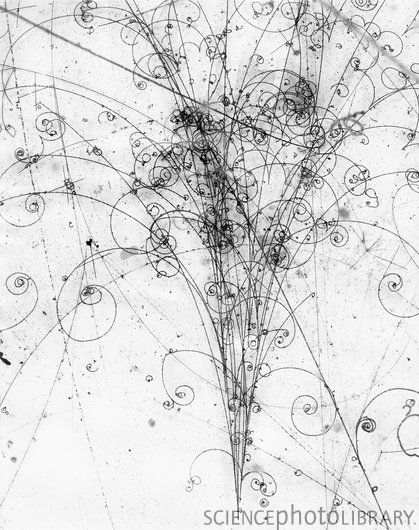
The colorful, noisy, smelly world that we perceive as an external physical reality is really an internal mental interpretation. Physicists have shown us that the "physical reality" is nothing like the reality we perceive. "Physical reality" is a vague cloud of infinitesimal wave/particles and "forces" and "fields" vibrating and whizzing around each other at tremendous speeds, randomly popping in and out of existence. Our body, which is itself a part of this vague cloud, reacts to the external vibrating and whizzing around of particles, with its own an internal series of vibrating and whizzing particles, chemical and electrical reactions. These reactions trigger our nervous systems, which cause neurons to fire in our brains, which in turn spawn other activities throughout the body. But at no point in this journey through this physical landscape, do we find an explanation of why we perceive a reality that is solid, orderly, has shape, color, flavor, sound, texture. Consciousness is responsible for that perception, it is perception. And perception is really all we have. All of the endless descriptions of our universe in all the scientific journals in the world are the result of perception.
There are many other anomalies present in the dominant paradigm which might have solutions in a consciousness centered paradigm. There is the problem of action at a distance, such as that which takes place in quantum entanglement. Entanglement occurs when two particles, protons, for instance, interact with each other, separate, and then apparently continue to interact or express correlative behavior, instantaneously (as in an interaction that occurs faster than it would take light to "travel" between the two points) and at some distance. This is what philosophers call, "Action at a distance."
This problem, of action at a distance, no longer becomes a problem when we posit another possible "dimension" of interaction where the particles are not separated by time or space, but have a causal relation outside of or are unbounded by the constraints of the space/time we normally perceive - a place where the apparently separate are connected.
Consciousness expresses itself through multiple dimensions and densities of reality, each with different sets of operational principles, one of which is our time/space dimension. It is the causal interaction between our dimension and the others which may create apparent instances of action at a distance. Action at a distance, which occurs all the time in quantum entanglement and the gravitational, nuclear, and magnetic forces, are the results of constraints which consciousness has placed on this dimension in order to facilitate a rich, orderly, evolving experience. These basic principles which hold our universe together and allow it operate are analogous to the programs which create the virtual environments in computer and video games. The "constants" of light, gravity, electricity, Planck's length, and so on, are analogous to basic settings such as refresh rate, pixel size, bit rate etc. They set the basic conditions for creating a time/space environment in which a user (consciousness) can interface (have a wide variety of experience).

Finally, perhaps one of the most important and fascinating differences that I have come across between the two paradigms is over the concept of light. The dominant paradigm holds that light is a wave/particle that has a constant speed through a vacuum of 186,282 miles per second. But unlike other moving objects, light has a very special and mysterious property. It is always moving at the same speed relative to the observer.
Imagine, if you will, that you are trying to race a photon. You are traveling at your top speed of 186,281 miles per second, and you look over to see how your opponent the photon is doing. You expect to see him moving ahead of you at a speed of 1 mile/second, because you know that his top speed is 1 mile/second faster yours. Instead, you look over to see him moving away from you at 186,282 miles per second. Your speed means nothing. No matter how fast you go (which can't be faster than light), light will always be going 186,282 miles per second faster than you. You certainly can't beat light, you can't even begin to catch up with it, and if you slow down or stop in frustration, light mocks you by continuing to move away from you at 186,282 miles per second, no matter what happens.This seems to defy all logic.
This anomalous quality of light is quite puzzling to physical materialists. Their problem is in thinking that light is a thing that moves through space. From a consciousness centered paradigm, the speed of light is nothing more than the speed at which consciousness creates time/space in this particular dimension. It is always the same speed relative to the observer because the observer (consciousness) is the one creating the time/space, and is always doing so at a rate of 186,282 miles of space for each second of time, in this particular dimension. Light does not move! 186,282 miles per second is the speed at which consciousness processes time/space data, it is the bit rate of this universe. Other universes or dimensions may have different bit rates, and to some of the occupants of those places, light may appear to travel at a different, yet constant and relative speed.
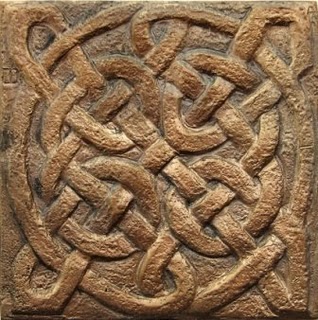
Okay. I probably did a pretty mediocre job of slogging through that bit of physics psuedo -knowledge, but that's the best I have for you right now. I'm not trying to turn this thing into a text book...so, moving on to less technical subjects...
Apart from redefining physics, the consciousness centered paradigm applies to everything else about the way we see the world, philosophically, metaphysically, scientifically, historically, morally, aesthetically. It is a meta-paradigm that encompasses everything, a truly unifying theory based first and foremost of the recognition of unity itself, as consciousness.
All that is, the sum totality of everything that we know and can ever know, is the result of the single, primal consciousness going through an evolutionary process, through which it is subjecting itself to experience through the differentiation and interaction of its parts. The body, mind, consciousness construct that we call the self is an individuated section within the internal evolving structure of the whole unified consciousness. What we call the person is a bright, animated, dynamic, free willed, nexus of consciousness - a beautiful glowing knot in the giant web. Each of us is connected to each other in this web, we are all made of the same thread. We are all evolving individually through our free will choices and together through unification with all that is. Our interactions are the one interacting with itself, when we harm others we harm ourselves and when we help others we help ourselves. In fact, there are no "others," we are all one.
In my next bog, I'll go into some more detail about how I think the unity-consciousness field creates what we call the "physical" reality.








